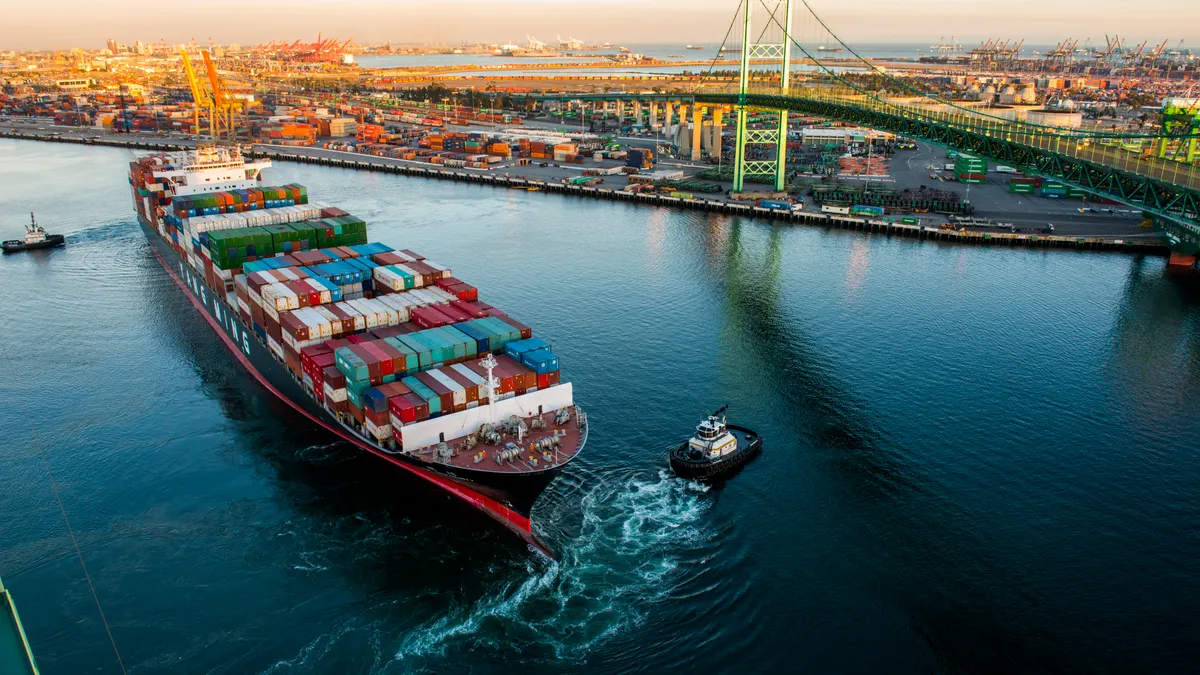Dive Brief:
- The Port of Los Angeles handled 18% of America's cargo volume in 2018 — over 9.5 million TEUs. Despite these record-breaking figures, the port's new $1.6 billion budget anticipates a slight slowdown in 2019.
- In the approved budget, the port expects volume to decline to 9.4 million TEUs in the coming fiscal year. This will cause operating revenue to decline about 1.9% to $499.7 million, according to a press release. The budget also accounts for a corresponding decrease in operating expenses which is expected to help offset the reduction in cargo.
- China is the port's number one trading partner with $153 billion worth of cargo coming from the country in 2018. As uncertainty around the Trump administration's fourth tranche of proposed tariffs and the trade war with Beijing continues, companies are stockpiling inventory and rushing shipments in order to hedge against increased import prices. However, stockpiling is expected to slow down through 2019 and 2020 if the tariff goes into effect, hence the forecast in the port's budget.
Dive Insight:
"While the Port of Los Angeles achieved record cargo volumes in 2018, this budget takes a purposeful and measured approach as we move into the next fiscal year," Jaime Lee, president of the Harbor Commission, said in a press release.
Despite having such a high-volume year, the port has faced challenges responding to the supply chain issues caused by rapid trade policy changes and tariff increases.
The changes have "really gummed up the operations of the supply chain," Eugene Seroka, executive director of the Port of Los Angeles, told the LA Times. "We’ve got a lot of cargo coming in that just sits. Containers are stacked high. Truck lines are long. And warehouses are bursting at the seams." The capacity crunch is also affecting the areas massive warehousing sector, according to Seroka, with vacancy down to 1% from its usual 5%-7% levels.
Despite the expected dip in cargo traffic and the uptick in capacity challenges, the port's $1.6 billion budget represents a significant increase over last year's. This is in large part due to a 58.6% percent increase in capital projects spending, totaling $144 million. Of that amount, "$64.7 million will go to terminal improvements, $38 million to maritime services, $11.7 million to transportation upgrades and $8.5 million to security-related projects," according to the press release.
These investments are in line with the port's strategic plan for 2018-2022, which aims to improve its cargo handling and transportation infrastructures to attract more long-term "volume commitments and [establish] additional lines of business."













